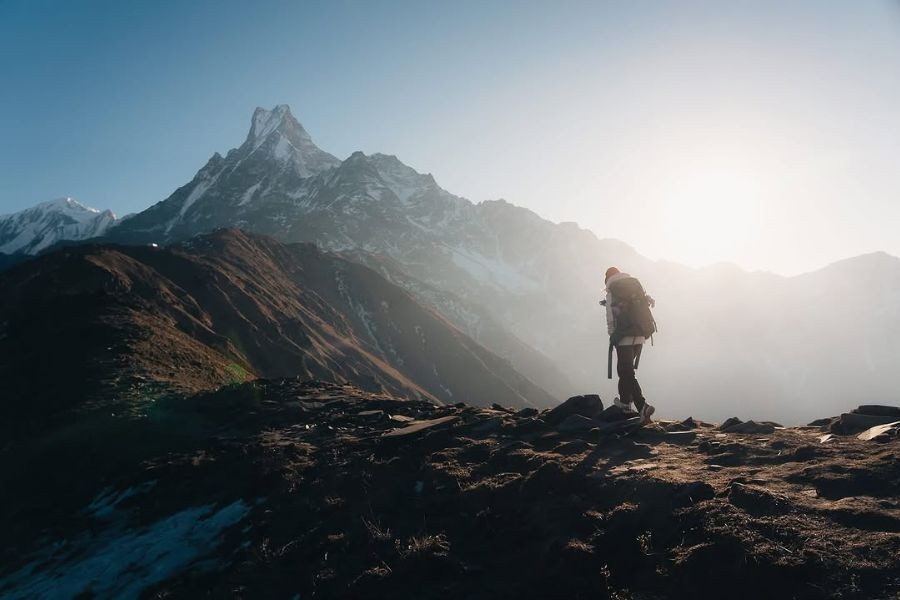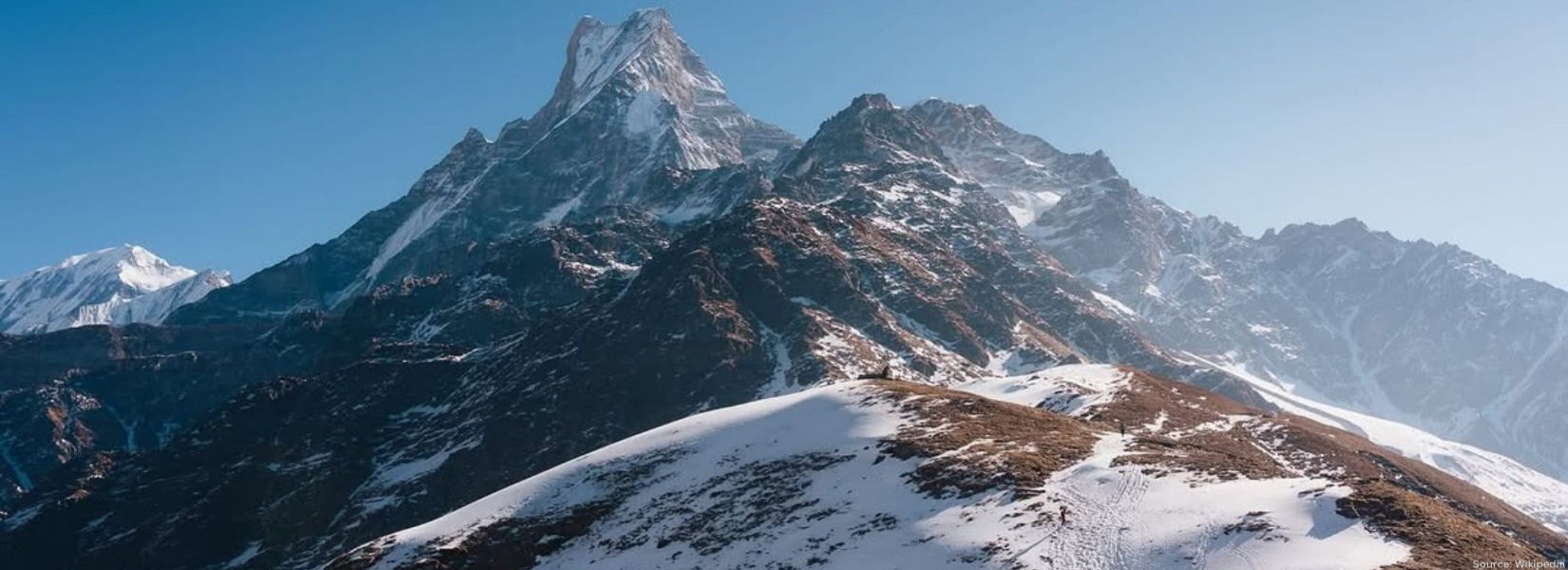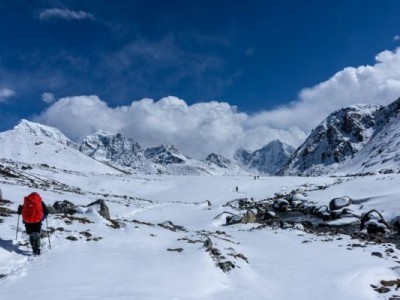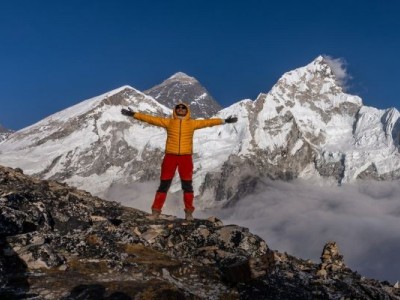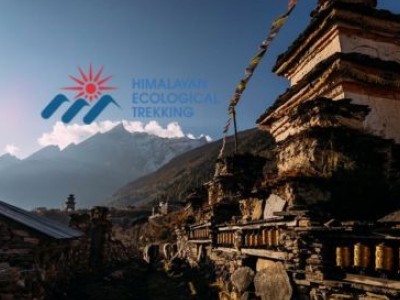Why Choose Mardi Himal Trek in Winter?
Embarking on the Mardi Himal winter trek is a unique experience that unveils a quieter, more serene side of the Annapurna region. While many trekkers opt for the spring or autumn seasons, winter offers its charm, crisp air, crystal-clear skies, and breathtaking snowy landscapes that are often overlooked.
One of the greatest advantages of trekking in the winter season is the unparalleled scenery. The snow-draped trails, frost-covered rhododendron forests, and panoramic views of Machhapuchhre (Fishtail) and the surrounding Himalayan giants create a picture-perfect setting for photography and reflection. The clarity of the skies during winter allows for some of the most spectacular sunrise and sunset views over the snow-capped peaks.
Another major benefit is the solitude. As an off-season trek in Nepal, the Mardi Himal trail sees fewer hikers, allowing for a more intimate connection with nature and a peaceful trekking environment. You'll have the mountain lodges mostly to yourself, offering a tranquil and immersive Himalayan experience.
Additionally, the cooler temperatures reduce the risk of altitude-related fatigue and overheating, making the hike more comfortable, especially for those new to winter hiking. For travelers looking to escape the crowds and embrace a raw, authentic adventure, the Mardi Himal winter trek is a perfect choice.
This Nepal trek in the heart of the Annapurna range is not just a journey—it's a serene escape into the wild beauty of the Himalayas during its most magical season.
Highlights of the Mardi Himal Winter Trek
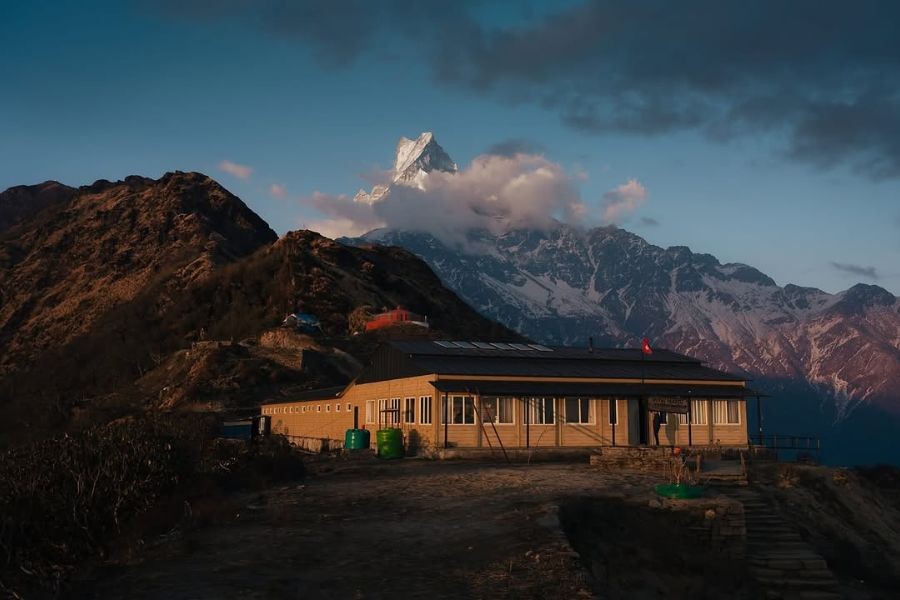
The Mardi Himal winter trek is filled with unforgettable moments and breathtaking natural beauty that make it stand out among other trekking routes in Nepal. Here are some of the top highlights that make this journey a must-do for winter adventure seekers:
Panoramic Mountain Views and Snow-Covered Landscapes
One of the most rewarding aspects of this snow trek is the uninterrupted, crystal-clear views of the Himalayan giants. Towering peaks like Machhapuchhre (Fishtail), Annapurna South, and Hiunchuli seem even more majestic when framed by fresh snowfall and vibrant winter skies. The trails, blanketed in snow, add a magical charm to the hike, creating postcard-worthy scenery at every turn. Whether you're ascending through pine forests or standing at the High Camp, every step offers a new, awe-inspiring perspective of the Annapurna region.
Unique Winter Wildlife and Flora
Despite the cold, winter in the Himalayas supports a surprising variety of flora and fauna. You may encounter Himalayan monals (Nepal's national bird), snow pigeons, and other high-altitude species adapted to the season. The rhododendron trees, though not in bloom, stand tall and stoic under their icy coat, adding to the trail's wintery beauty. These encounters with unique Himalayan wildlife enrich the experience, offering more than just scenic views on this off-season trek in Nepal.
The Mardi Himal trek in winter is a visual and sensory delight—a perfect blend of natural splendor, solitude, and raw Himalayan wilderness.
Best Time for Mardi Himal Winter Trek
The Mardi Himal winter trek is best experienced between December and February, when the Himalayas transform into a snowy paradise. These winter months bring out the true essence of an off-season trek in Nepal, offering a peaceful and picturesque adventure with fewer trekkers on the trail.
During this time, the weather in the Annapurna region is usually consistent, with clear sky and little rain. The crisp mountain air and excellent visibility allow for uninterrupted views of Machhapuchhre (Fishtail), Annapurna South, and other towering peaks. The days are usually sunny and bright, while nights can be cold, especially at higher elevations so proper winter trekking gear is essential.
Although it's the coldest time of the year, the serene beauty of the snow-covered landscapes and the quiet charm of the trail make winter a magical season for this Nepal trek. Fewer crowds also mean more personalized hospitality at teahouses and the freedom to enjoy the mountains in solitude.
If you're looking for a winter hiking experience that combines adventure, tranquility, and natural splendor, December to February is the perfect window to explore the hidden gems of the Mardi Himal route.

Mardi Himal Winter Trek Itinerary
The Mardi Himal winter trek itinerary is compact yet incredibly rewarding, making it a perfect choice for those with limited time but a strong desire to witness Nepal's winter wonders. Typically completed in 5 to 6 days, this route takes you through a stunning mix of snow-covered forests, alpine ridges, and traditional villages in the heart of the Annapurna region.
Here's a sample day-by-day breakdown of the trek:
Day 1: Travel to Kande by car from Pokhara, then hike to Deurali.
After a beautiful drive to Kande, you will climb gently through rhododendron forests to Deurali to start your winter adventure. Clear skies and snow-covered paths set the mood for the trip.
Day 2: Journey to Low Camp from Deurali
As you ascend, the trail offers panoramic views of Machhapuchhre (Fishtail) and the surrounding snow-capped peaks. A comfortable place to spend the night amidst pine forests is Low Camp.
Day 3: Hike to High Camp from Low Camp
This is one of the most scenic days of the Mardi Himal winter trek. You'll hike along a snow-covered ridge with dramatic vistas of the Annapurna range, eventually reaching High Camp at around 3,580 meters.
Day 4: Trek back to Low Camp after reaching Mardi Himal Viewpoint.
Rise early for a sunrise hike to the Mardi Himal Base Camp or viewpoint. The Himalayan panorama here is unforgettable, especially in the crisp winter light.
Day 5: Drive to Pokhara after trekking back to Siding.
Descend through a quieter forest trail to Siding Village, marking the end of your winter hiking journey. From there, return to Pokhara by vehicle.
This flexible Mardi Himal itinerary can be adjusted based on your pace, weather conditions, and fitness level. It's an ideal Nepal trek for winter explorers looking for both adventure and serenity.
Difficulty Level and Trekking Experience
The Mardi Himal winter trek is considered a moderate trek in terms of difficulty, making it accessible to both novice and experienced hikers. While the trail doesn't reach extreme altitudes—peaking around 4,500 meters at Mardi Himal Base Camp—it still offers a true Himalayan adventure, especially with the added challenge of winter hiking conditions.
During the colder months, trail sections can be snow-covered and slippery, particularly above Low Camp. Proper footwear, layering, and basic trekking gear are essential for safe navigation. The winter landscape is stunning, but also demands awareness and preparation for cold temperatures, especially during early mornings and nights.
Despite these conditions, the altitude gain is gradual, helping most trekkers adjust without serious acclimatization issues. Daily walking hours range from 4 to 6, with plenty of breaks and teahouse stops along the way. The route is well-marked and relatively less crowded, providing a peaceful and manageable trekking experience.
This Nepal trek is ideal for adventurous beginners with a good fitness level, as well as for seasoned trekkers seeking a snow trek with breathtaking views and solitude. With basic preparation and the right mindset, the Mardi Himal winter trek is a rewarding journey that offers both challenge and serenity in the heart of the Annapurna region.
Accommodation and Food on the Trail
One of the comforting aspects of the Mardi Himal winter trek is the availability of traditional teahouses along the route, even during the colder months. These locally run lodges offer a warm and welcoming place to rest after a day of winter hiking in the Annapurna region.
In winter, while some teahouses may close due to snow or reduced foot traffic, the main stops—such as Deurali, Low Camp, and High Camp—usually have at least one or two open lodges. Rooms are basic but clean, typically with twin beds, warm blankets, and shared bathrooms. As temperatures can drop significantly at night, it's wise to bring a good sleeping bag rated for cold weather.
Winter teahouse facilities are more scarce than during the busiest times of the year. Solar-heated showers may be unavailable, and heating is usually provided in the dining area only. Despite this, the hospitality of local hosts and the cozy, communal atmosphere more than makeup for the simplicity.
When it comes to food on the trail, trekkers are treated to hearty, energy-rich meals designed to keep them fueled in cold conditions. Expect classic Nepali cuisine like dal Bhat (lentil soup with rice), noodles, soups, Tibetan bread, potatoes, and sometimes even seasonal vegetables. Hot drinks like ginger tea, masala tea, and lemon honey are widely available and perfect for staying warm.
The Mardi Himal trek may be a snow trek, but the warmth of local culture and home-cooked meals provides a perfect balance of adventure and comfort.
Essential Packing List for Winter Trekking
Preparing the right gear is crucial for a safe and enjoyable Mardi Himal winter trek. Since this is a snow trek through the cold and often icy trails of the Annapurna region, packing wisely ensures both comfort and safety during your winter hiking adventure.
Recommended Clothing:
- Base layers (thermal tops and bottoms) for warmth
- Insulating mid-layers (fleece or down jackets)
- the outer shell (jacket and pants) is waterproof and windproof.
- Trekking trousers (preferably quick-dry and insulated)
- Warm hat, neck gaiter, and gloves (inner and outer layers)
- Woolen socks (at least 3–4 pairs)
- Sturdy, insulated trekking boots with a good grip
- Gaiters (to protect your boots from snow)
Essential Gear and Equipment:
- Sleeping bag rated for -10°C or lower
- Trekking poles (helpful on snow-covered or slippery terrain)
- Sunglasses (to protect against snow glare)
- Headlamp with extra batteries (especially useful in teahouses with limited lighting)
- Thermos or water bottles that are insulated to avoid freezing
- Backpack with rain cover (30–50L for personal gear)
- Crampons or microspikes (for extra traction on icy trails)
Extras:
- Personal first aid kit and any necessary medication
- Sunscreen and lip balm with SPF
- Snacks (energy bars, nuts, etc.)
- Power bank or solar charger (limited electricity in teahouses)
Packing the right items not only enhances your experience on the Mardi Himal trek but also prepares you to safely enjoy the scenic, high-altitude trails of this off-season Nepal trek.
Tips for Winter Mardi Himal Trekking Safety
While the Mardi Himal winter trek offers an incredible off-season Himalayan adventure, winter conditions bring unique challenges. Staying informed and well-prepared is key to ensuring a safe and enjoyable journey through the Annapurna region.
Navigating Snow and Icy Trails
Snow-covered paths can be slippery and sometimes hard to follow, especially between Low Camp and High Camp. Use trekking poles and consider microspikes or crampons for better grip. Start your trek early in the day to avoid ice melt, and always follow marked trails to prevent getting lost in the snow.
Avoiding Avalanches
While the risk of avalanches on the Mardi Himal trek is relatively low compared to other high-altitude routes, it's still important to stay cautious, especially after heavy snowfall. Always verify trail conditions and local weather forecasts. Hiring a local guide who understands winter trekking terrain is highly recommended for added safety.
Staying Healthy in Cold Weather
Altitude sickness and hypothermia can become more likely in colder climates. Dress in warm, moisture-wicking layers, stay hydrated, and eat regularly. Carry a first aid kit with altitude medication if needed. At higher altitudes, take your time to acclimatize and rest if symptoms arise.
Emergency Preparedness
Mobile signals are limited on parts of the route, so inform someone about your itinerary. Carry a power bank or solar charger, and consider renting a satellite phone or emergency GPS device if trekking independently.
With proper precautions, this Nepal trek becomes a safe and rewarding winter hiking experience, full of pristine scenery and peaceful solitude.
Cultural Encounters and Village Life
Beyond its stunning snow-covered landscapes and majestic mountain views, the Mardi Himal winter trek offers rich cultural experiences that make this Nepal trek truly special. Along the trail, you'll pass through traditional villages where the warm hospitality of local communities provides a comforting contrast to the crisp winter air.
The people living in the Annapurna region are predominantly Gurung and Magar ethnic groups, known for their vibrant customs and close connection to the Himalayan environment. Even in the quiet of winter, you'll witness daily village life—farmers tending livestock, children playing in the snow, and families gathering around wood fires.
Local teahouse owners welcome trekkers with genuine warmth, offering traditional meals and stories about their culture. This blend of nature and human connection is a highlight of the Mardi Himal winter trek, giving you insight into Nepal's rural lifestyle and mountain traditions during the off-season.
Experiencing this cultural side enriches your adventure, making the journey more than just a snow trek—it becomes a meaningful exploration of both the majestic Himalayas and the resilient people who call this region home.
How to Get to the Mardi Himal Trailhead
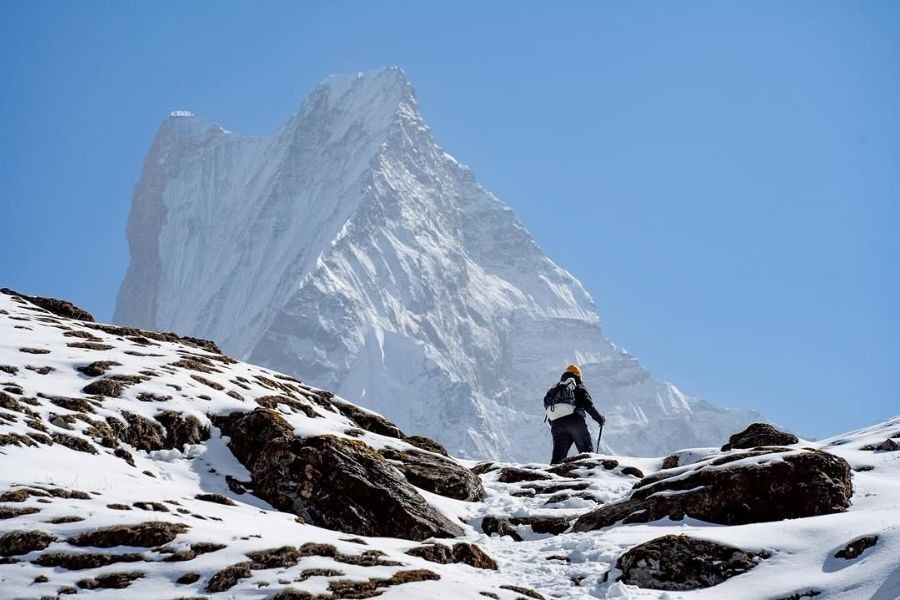
Getting to the Mardi Himal winter trek trailhead is straightforward, with Pokhara serving as the main gateway for most trekkers heading into the Annapurna region.
From Pokhara, the easiest option is a scenic 1.5 to 2-hour drive to Kande, the official starting point of the Mardi Himal trek. Private taxis, jeep rentals, and local buses are all available for this route. The road is mostly well-maintained, but weather conditions during winter may occasionally affect travel times.
If you're arriving from Kathmandu, the capital city of Nepal, the most popular choice is to take a 25- to 30-minute domestic flight to Pokhara Airport, followed by a drive to Kande. Alternatively, you can opt for a 6- to 8-hour bus journey from Kathmandu to Pokhara, though the road can be rough and time-consuming.
Once you reach Kande, the trek begins with a gradual ascent through forests and villages, starting your immersive experience in this stunning Nepal trek. Planning your transport helps ensure a smooth start to your Mardi Himal winter trek and lets you focus on enjoying the incredible Himalayan adventure that lies ahead.
Cost and Permits for the Mardi Himal Winter Trek
When planning your Mardi Himal winter trek, it's important to budget for permits, accommodation, food, and guide services to ensure a smooth experience in the Annapurna region.
Trekking Permits
The Annapurna Conservation Area Permit (ACAP) and the Trekkers' Information Management System (TIMS) card are the two primary permits needed. Both can be obtained easily in Pokhara or through your trekking agency before the trek. Permit costs are affordable and help support conservation and local communities along this Nepal trek.
Budgeting for the Trek
Winter trekking can be slightly cheaper than peak seasons, thanks to fewer tourists and more affordable accommodation in some teahouses. However, costs for warm gear rental or purchase, plus hiring a guide or porter (recommended for winter safety), should be considered. Expect to budget for transport, permits, accommodation, meals, guide fees, and personal gear.
Winter vs. Spring/Autumn Trekking: Pros and Cons
Pros of Winter Trekking:
- Quieter trails and fewer crowds offer more solitude and a peaceful experience.
- Beautiful vistas of Machhapuchhre and the Annapurna peaks can be seen in the clear, bright sky.
- Lower prices for accommodation and some services during the off-season.
Cons of Winter Trekking:
- Colder temperatures require proper gear and preparation.
- Some teahouses may close due to snow or low visitor numbers.
- Hiking might be more difficult on icy or snow-covered trails.
Compared to the more popular spring and autumn trekking seasons, known for milder weather and blooming rhododendrons, winter offers a unique, less crowded experience filled with pristine snowy landscapes. Choosing your season depends on your adventure style, comfort with cold, and desire for solitude.
Conclusion: Is Mardi Himal Winter Trek Right for You?
The Mardi Himal winter trek is a spectacular journey that combines the raw beauty of Nepal's Annapurna region with the peaceful solitude of the off-season. If you're drawn to pristine snow-covered landscapes, breathtaking views of Machhapuchhre and surrounding peaks, and a quieter, more intimate trekking experience, this winter hiking adventure is an excellent choice.
The benefits are enormous, but the cold and icy path conditions necessitate careful planning, the right equipment, and some prior trekking expertise. You'll enjoy crystal-clear skies, fewer crowds, and warm local hospitality in cozy teahouses along the route.
Whether you're an adventurous beginner or an experienced trekker seeking a unique challenge, the Mardi Himal winter trek offers a magical blend of nature, culture, and tranquility. Embrace the season, prepare well, and set off on a rewarding winter trek that will leave you with unforgettable memories of Nepal's majestic Himalayas.
Frequently Asked Questions about Mardi Himal Winter Trek
Can I do the Mardi Himal trek in winter?
You can do the Mardi Himal trek in winter, where you can see nice snowy scenery and get clear views of the mountains. You will need to expect cold weather and potential icy trails.
What permits are needed for the Mardi Himal trek?
To trek in the Annapurna region, you need the Annapurna Conservation Area Permit (ACAP) and a TIMS card. The permits can be obtained in Pokhara or through your trekking agency.
How challenging is the winter Mardi Himal trek?
The trek is rated moderate in difficulty. Winter conditions like snow and ice make the trail a bit more challenging, so having proper gear and some trekking experience is recommended.
What kind of accommodation is available on the trail during winter?
Teahouses are available at key stops such as Deurali, Low Camp, and High Camp. While some lodges may close during winter, main stops usually remain open, offering basic facilities and warm hospitality.
What is the best time to do the Mardi Himal trek?
While spring and autumn are popular, December to February offers a unique winter experience with fewer crowds, clear skies, and beautiful snowy scenery, perfect for those seeking solitude.
What should I bring on the winter climb up the Mardi Himal?
Essential gear includes thermal clothing, insulated jackets, waterproof layers, sturdy trekking boots, gloves, hats, and a sleeping bag rated for cold weather. Trekking poles and microspikes are also highly recommended for icy sections.
Ready to answer the call of the Himalayas?
Let our local experts lead you through the snowy trails of Mardi Himal for an adventure you’ll never forget.
Make an inquiry at [email protected] or connect instantly on WhatsApp: +977 9851006023 (Bikesh) for your free trek briefing.
Your Himalayan story starts here—let’s create it together!
